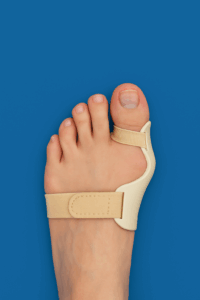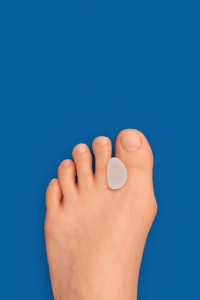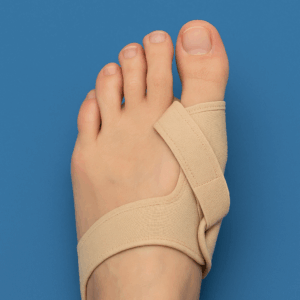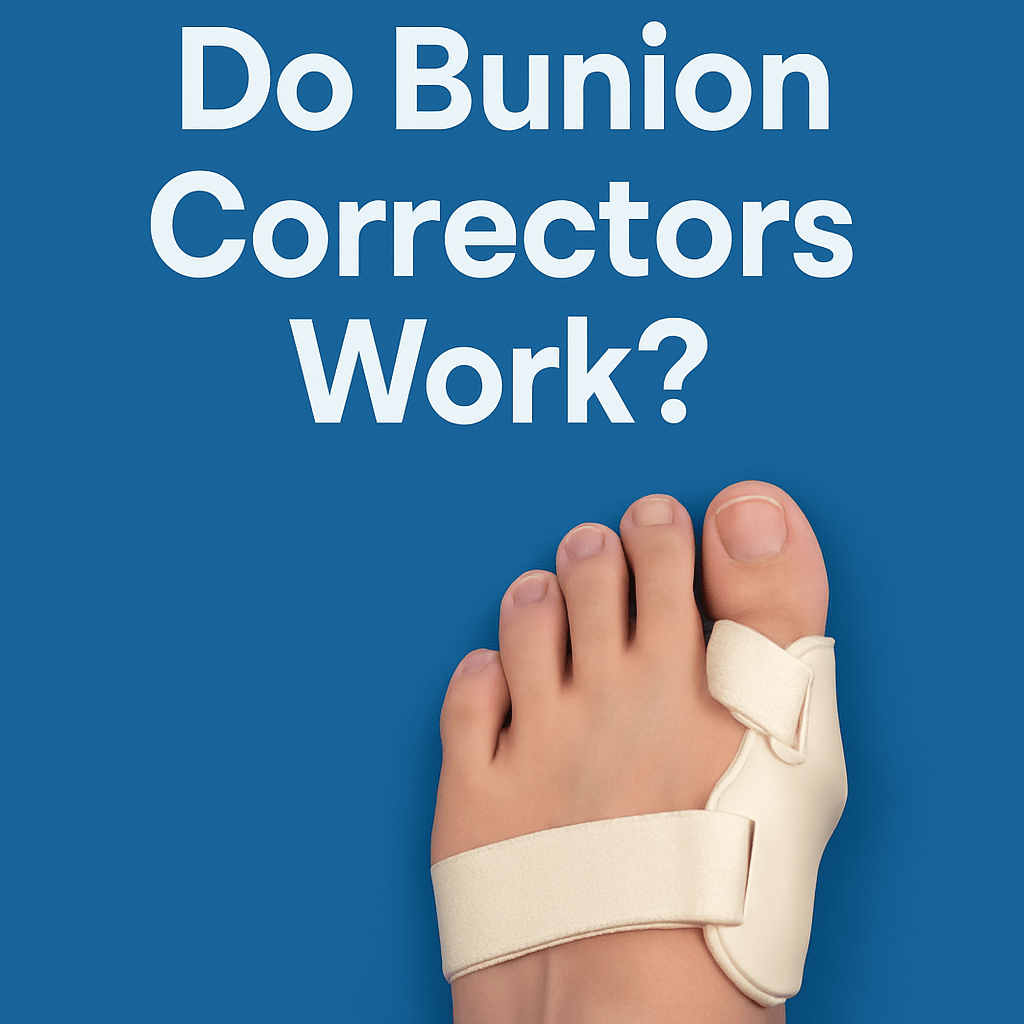If you’ve noticed a painful bump forming along the side of your big toe, you’re not alone. Bunions are one of the most common foot deformities, affecting millions of people every year. Many people turn to bunion correctors, such as splints, braces, or toe spacers, in the hope of finding relief or even correction of their condition. But do bunion correctors really work? The short answer is that they can help relieve discomfort, but they cannot permanently fix the problem.
At Alliance Orthopedics, we understand how frustrating bunion pain can be, especially when it starts to interfere with walking, exercising, or even wearing shoes comfortably. While bunion correctors can offer short-term comfort, you may need minimally invasive bunion surgery to get permanent relief.
What Is a Bunion?
A bunion is a bony bump that develops at the base of the big toe joint. Over time, the big toe drifts toward the smaller toes, causing the joint to become misaligned. This misalignment creates pressure and friction, which can lead to pain, redness, swelling, and stiffness. In the early stages, bunions may only cause mild discomfort. But as the deformity progresses, your pain can get worse and interfere with your daily activities.
What Are Bunion Correctors?
Bunion correctors are non-surgical, orthopedic devices designed to provide comfort and reduce pressure on the bunion. They come in different forms, including splints, toe spacers, and braces, with each promising some degree of symptom relief.
While these products can temporarily improve comfort and alignment, it’s important to understand that they cannot reverse or stop the underlying structural changes that cause a bunion. Let’s take a closer look at how each type works.
Bunion Splints

Bunion splints are usually worn at night and use straps and padding to gently pull the big toe into a straighter position. The goal is to keep the toe properly aligned while reducing tension on the joint. Splints can help relieve pressure and may reduce pain or inflammation overnight, as well as improve flexibility around the big toe joint. However, once the splint is removed and normal walking resumes, the toe typically returns to its misaligned position, since splints cannot realign the bones or ligaments that have already shifted.
Toe Spacers

Toe spacers or separators are small gel or silicone devices placed between the big toe and the second toe. They’re designed to keep the toes apart, reducing friction and pressure while walking or standing. Toe spacers can help with irritation, especially if your bunion causes rubbing or overlapping toes, and can improve comfort in shoes. However, like splints, spacers cannot change your bone structure or prevent the bunion from progressing.
Bunion Braces

Braces provide some support to the toe and foot, helping with minor symptoms, such as swelling and tenderness. They’re worn during the day and may give a sense of stability and cushioning for sore joints. Although bunion braces can improve comfort and reduce swelling, they don’t correct bone misalignment. Compression from the braces may temporarily ease inflammation, but the deformity itself remains unchanged.
When Bunion Correctors Aren’t Enough
Bunion correctors are helpful for symptom management, not structural correction. They can be a great first step in managing pain, especially when combined with wearing wider and more supportive shoes or using custom orthotics. However, once a bunion has formed, no brace or device can realign the bone or reverse the deformity.
Bunions tend to get worse over time if left untreated. As the big toe drifts further out of place, pain and swelling can increase, and the joint may become arthritic or stiff. If bunion correctors no longer provide relief, or if your symptoms are interfering with your quality of life, it may be time to consider a more permanent solution.
At Alliance Orthopedics, our foot and ankle specialists take a personalized approach to bunion treatment. We always begin with conservative treatment options, including footwear modification, orthotics, and non-surgical pain management. But if these methods fail to provide relief, minimally invasive bunion surgery offers a practical and long-term solution.
What is Minimally Invasive Bunion Surgery?
Minimally invasive bunion surgery fixes bunions through a few tiny incisions to realign the bones and joint instead of one large cut. Using specialized tools and real-time imaging, your foot and ankle surgeon carefully realigns the bones and joints without disturbing much of the surrounding tissue. The result? Less pain, less swelling, and a much easier recovery.
Because the minimally invasive procedure causes less trauma to the foot, most people can start walking again the same day. The smaller incisions also mean minimal scarring and a faster return to regular shoes and daily activities. For many, it’s the difference between being sidelined for months and getting back on their feet quickly.
Benefits of Minimally Invasive Bunion Surgery
- Smaller incisions, less scarring: Tiny incisions mean hardly any scars and a natural-looking result.
- Less pain and swelling: You’ll likely have less pain and swelling so that you can get back on your feet comfortably.
- Faster recovery: Many patients can bear weight and walk the same day.
- Long-term relief: It provides you with a permanent solution to get rid of your bunion, preventing future problems and symptoms.
- Lower risk of complications: Because the incisions are so small, there’s less risk of infection, and your body can heal faster.
Is Minimally Invasive Bunion Surgery Right for You?
Whether minimally invasive bunion surgery is right for you depends on how severe your bunion is and how much it’s affecting your life. If you’ve tried splints, orthotics, or shoe changes and you’re still experiencing pain, or if the bump keeps growing larger, it may be time to consider surgery.
During your appointment, a foot and ankle specialist at Alliance Orthopedics will perform a thorough evaluation, which may include taking X-rays, assessing your joint movement, and looking closely at your foot structure. From there, they’ll talk with you about your condition, what your treatment options are, and what recovery might look like, so you can make a decision you feel good about.
If bunion pain is making it difficult to walk, exercise, or even wear your favorite shoes, it’s worth having a conversation with a specialist. A short consultation can help you understand what’s going on and find out if minimally invasive surgery could be the treatment you’ve been looking for.

